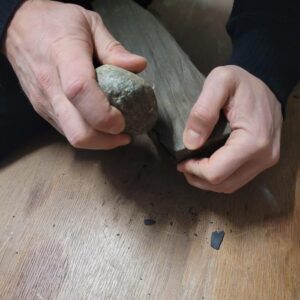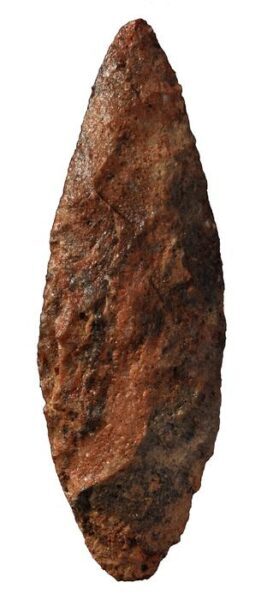
PROCEEDINGS OF THE NATIONAL ACADEMY OF SCIENCES—A study finds that Stone Age toolmakers likely understood the mechanical properties of rocks they selected as raw materials for toolmaking. The Stone Age is marked by the use of rocks as tools, a process that requires the selection of rocks that not only flake easily so that they can be shaped but are also tough and durable. The factors underlying the selection of rocks to make tools is not well understood. Patrick Schmidt and colleagues analyzed the mechanical properties of stone tools found at the Diepkloof Rock Shelter site in South Africa, representing the Middle Stone Age. The primary types of rocks shaped into tools at the site were hydrothermal quartz, quartzite, hornfels, and silcrete. The authors developed a physical model of rock characteristics to estimate the force needed to flake pieces of rock and to determine the rocks’ strength during projectile impact. The modeled physical properties explain the selection of quartzite, silcrete, and hydrothermal quartz raw materials at the Middle Stone Age site, suggesting that toolmakers understood the tradeoffs of ease of tool shaping and mechanical strength. According to the authors, the results* suggest that Stone Age toolmakers had the engineering skills required to fashion tools with desirable qualities at a reasonable cost.
____________________________

Researcher strikes a flake from the South African rock hornfels to demonstrate how tools were made in the Middle Stone Age. Patrick Schmidt
____________________________

A finely crafted “Still Bay point” from Diepkloof Rock Shelter, a typical stone tool from the Middle Stone Age in southern Africa. Patrick Schmidt
____________________________
Article Source: PNAS news release.
*“The driving force behind tool-stone selection in the African Middle Stone Age,” by Patrick Schmidt, Ioannis Pappas, Guillaume Porraz, Christoph Berthold, and Klaus G. Nickel, Proceedings of the National Academy of Sciences, 26-Feb-2024. https://www.pnas.org/cgi/doi/10.1073/pnas.2318560121.
_____________________________
Advertisement

See the incredible archaeology, architecture, and art of northern Spain. A unique tour with special expert guides and lecturers through the collaboration of Popular Archaeology Magazine and Stone & Compass Tours. Not to be missed. Read More About It: https://popular-archaeology.com/article/northern-spains-triple-a-archaeology-architecture-and-art/.
_____________________________


